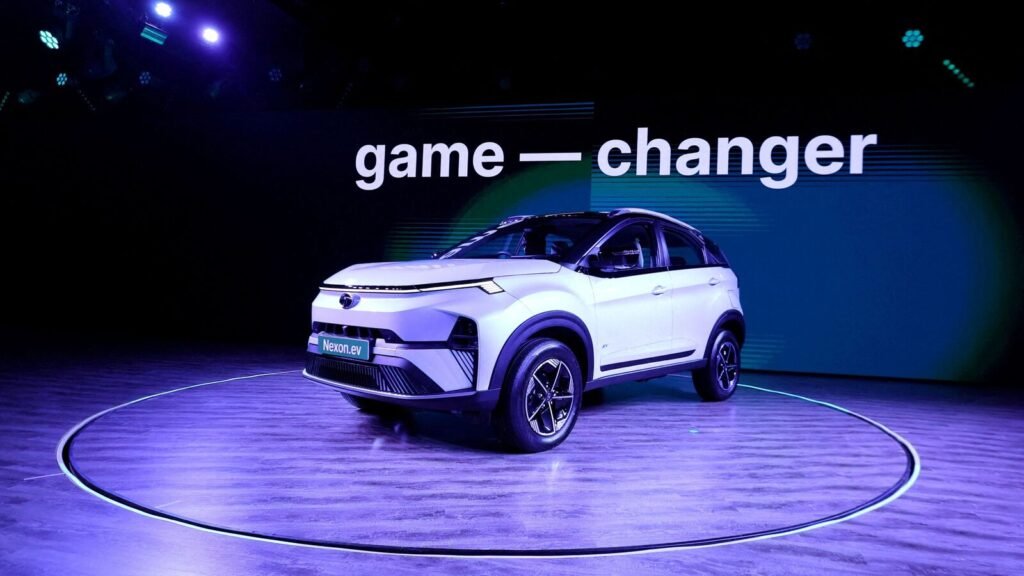Mint Explainer: Is the Tata Motors demerger a strategic gambit or a non-event?

By separating the two businesses, Tata Motors gives investors the opportunity to evaluate their performances on their own merit. Plus, it can play on the passenger vehicle electrification and premiumization theme without the overhang of an unrelated business.
Demergers, such as the Reliance Industries Ltd and Jio Financial Services split last year or that of the upcoming ITC consumer goods and hotels businesses, have traditionally been viewed positively from the point of view of creating shareholder value.
But Tata Motors’ announcement to split its two core businesses has stirred diverse reactions within the analyst community, and some have even downgraded the stock. Mint explains why.
What are the likely underlying reasons for the demerger?
Tata Motors has previously stated its intent to simplify its group shareholding structure by way of reducing its myriad companies via the merger route.
However, splitting up its passenger vehicle business from its legacy business may be a vote of confidence after a turnaround spanning years.
More importantly, the demerger may be a step towards the eventual goal of providing an exit to private equity investors in its electric vehicles business and simplify its structure for raising further capital.
Is the turnaround in the passenger vehicles business also a reason?
A bit of background first. Tata Motors is one of Tata Group’s key listed entities, smaller in market cap than Tata Consultancy Services, but larger than Tata Steel. It not only contributes significant revenues to the group but also forefronts the group’s venture into clean energy.
Tata Motors has established itself as a leading player in the Indian electric vehicle market and is actively involved in building a comprehensive EV ecosystem along with Tata Power (charging infrastructure) and Tata Chemicals.
This for a company that had started out eight decades ago primarily focused on commercial vehicles.
However, pivotal points in its history, such as the launch of the Tata Sierra in 1991, the acquisition of Jaguar Land-Rover (JLR) in 2008, and the launch of the Nano have transformed the company into a diversified automotive player.
Barring the recent rally in its stock prices (204% return in the last 36 months), Tata Motors and the Street have both held the view that the company’s valuation doesn’t compare favourably to that of Maruti Suzuki Ltd and Ashok Leyland Ltd when viewed in comparison with its standalone commercial and private vehicles businesses.
So why are some analysts skeptical about the demerger?
While the demerger is touted as a strategic manoeuvre to unlock value and streamline operations, not everyone’s convinced.
Motilal Oswal views the demerger as a “non-event”, indicating that it has already factored in any potential positives into its estimates.
“While the demerger seems to be a step in the right direction, we do not foresee any need to revisit our target price, which is already based on SoTP (sum of the parts) valuation.,” Motilal Oswal said in a report.
“Moreover, despite factoring in most of the positive triggers in our estimates, we get limited upside given the recent sharp run-up in the stock. We, hence, downgrade Tata Motors to Neutral (from Buy) with an unchanged target price of ₹1,000 per share,” it said.
UBS has maintained a ‘sell’ recommendation on the Tata Motors stock, emphasizing that while the demerger simplifies the company’s structure, material value remains uncertain at present.
What are the other concerns?
This is a big one: Over 80% of the revenue generated by Tata Motors’ passenger vehicles division stems from the iconic luxury carmaker, JLR.
Analysts say the true value from the split for Tata Motors’ domestic passenger vehicles business might be limited unless the company decides to de-merge JLR from its domestic private and electric vehicles businesses.
JLR, if listed on the UK or American stock exchanges, is unlikely to fetch much higher multiples than peers such as BMW and Mercedes Benz in the luxury car market, according to analysts.
Then there are complex valuation dynamics. The entwined nature of JLR with Tata Motors’ broader passenger vehicles business, analysts say, poses challenges in determining the actual impact of the demerger on valuation.
As Tata Motors navigates the next 12-15 months of the demerger process, stakeholders and market observers are keenly watching to assess how each segment capitalizes on its newfound independence.
The outcome will determine whether the demerger is a strategic pivot for sustained growth or a muted evolution in Tata Motors’ corporate narrative.
